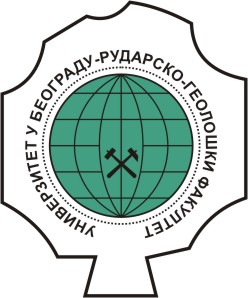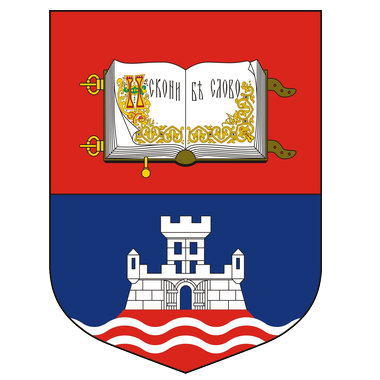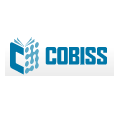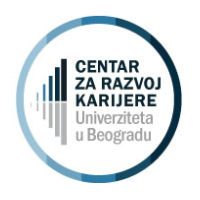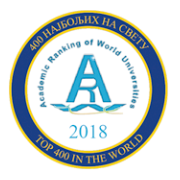Study program:
Mining Engineering (II semester -PhD) |
|
Name of subject: Surface Physical Chemistry and environmental protection |
Instructors:
|
|
Status: Optional |
|
ECTS: 10 |
|
Prerequisites: - |
Course Objectives:
Study of physicochemical processes that take place in heterogeneous systems at the interfaces (gaseous / fluid / solid), through the study of kinetics (velocity and mechanism), equilibrium and thermodynamics of the process and application of appropriate physicochemical methods of analysis, in order to apply knowledge in mineral processing (grinding, flotation, drainage, leaching, etc.), oil exploration and environmental and protection at work |
Learning Outcomes:
Understanding of a large number of physicochemical microprocesses taking place at the boundary of phases in complex heterogeneous systems, oxido-reduction conditions in the process of ore grinding or in flotation pulp, in water systems, stability of colloidal systems, precipitation conditions and water treatment, as well as properties of surfactants collectors, frothers), dispersants, emulsifiers, adsorbents, ion exchangers, etc., kinetics and thermodynamic conditions for the process at the surfaces, and finally the application in the field of exploitation of mineral raw materials (gaseous, liquid and solid) and protection of living and working environment, solving problems related to doctoral work with the use of adequate physicochemical methods of analysis. |
Content:
Theory teaching
Thermodynamics of the surface. Process at interfaces: gas / liquid, gas / solid / liquid, liquid / solid, firm / firm. Adsorption (physical and chemical). Specific surface area. Heat adsorption. Adsorption at the gas / solid interface. Gas chromatography. Surface tension, methods of determination. Surfactants. CMC. Gibbs- adsorption isotherm. Emulsions and foams. Seminar I. Adsorption at the liquid / solid interface. Structure of the electrical double layer. Zeta potential. Methods of determination. Adsorption isotherms. Ionic exchange. Adsorption kinetics. Flotation kinetics. Application of adsorbents in the protection of the environment and protection at work. Application of thermal (TGA, DTA, DSC), spectroscopic (UV-Vis, IR, ATR-IR, AES, ESCA) methods, HPLC in the analysis of the adsorption process. Electron microscopy. Electron microanalysis. Colloids. Coagulation. Flocculation. Rheology. Seminar II. Electrochemical reactions at the interfaces: liquid / solid, solid / solid. Equilibrium and non-equilibrium processes. Galvanic contact in the grinding and flotation process. Electrolysis. Corrosion. Eh-pH (Pourbeaux) diagrams of thermodynamic stability of element / water system, mineral / water. Protection from corrosion. Selected electrochemical methods for analyzing the above processes. Catalysis. Kinetics of heterogeneous catalysis. Hemisorption and catalysis. Application of catalysis in environmental protection. Practical teaching
Practical work in the laboratory and the application of certain physicochemical methods will be adapted to the topic of doctoral dissertation of the candidate |
Suggested Reading List:
- D. Vučinić, Svetlana Popov: Fizička hemija, RGF,2004.
- I. Holclajtner-Antunović: Opšti kurs fizičke hemije, Zavod za udžbenike i nastavna sredstva, Bgd, 2000.
- A. W. Adamson, Physical Chemistry of Surfaces, John Wiley &Sons, NY, 1990.
- S. Mentus, Elektrohemija, Fakultet za fizičku hemiju, Beograd, 1993.
- Proceedings of the Third International Symposium on Electrochemistry in Mineral & Metal Processing III (Proceedings / The Electrochemical Society),R. Woods, P. E. Richardson (Editori), Electrochemical Society, 1992
- D. Myers, Surface, Interface & Colloid: Principles and Applications, VCH Publishers, 1995.
- Handbook of Surface and Colloid Chemistry, 2nd Ed.,Edited by K.S. Birdi, CRC Press 2002
- V.Dondur, Hemijska kinetika, Fakultet za fizičku hemiju, Beograd, 1992
- N.Petranović, Hemijska termodinamika, Fakultet za fizičku hemiju, Beograd, 1992
- C.Mentus, U.Mioč, Odabrane metode fizičkohemijske analize, Fak. za fiz. hemiju, , 1992
- Fizičkohemijske metode , Hemijsko-tehnološki priručnik, Rad, Bgd., 1985.
- Korozija i zaštita, Hemijsko-tehnološki priručnik, Rad, Bgd., 1985.
- N.Petranović, Hemijska termodinamika, Fakultet za fizičku hemiju, Beograd, 1992
|
Conduct of the Course:
lectures, student research, seminars, consultations |
Fund hours:
| Lectures |
Exercises |
Other forms of teaching |
Study research |
| 4 |
0 |
0 |
0 |
|
Assessment:
| Final Exam |
ECTS |
| Oral Exam | 40 |
| Classwork Assessment |
ECTS |
| Class Participationа | 10 | | Practical Classes | 30 | | тестови (два) и дом. Задаци | 0 | | Seminars | 20 |
|
|
Additional Assessment Criteria: - |
|
|
